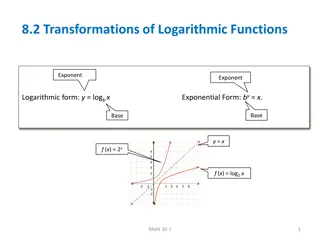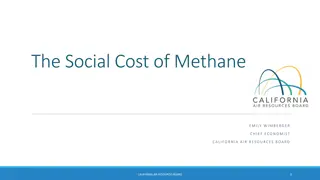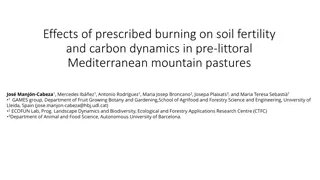Understanding Methane Burning: Chemical Transformations and Energy
Explore the process of methane burning through investigations and molecular modeling activities. Learn about the chemical changes involved, including the production of carbon dioxide and water. Discover the energy transformations that occur during combustion, with forms such as light and heat energy emerging.
Download Presentation

Please find below an Image/Link to download the presentation.
The content on the website is provided AS IS for your information and personal use only. It may not be sold, licensed, or shared on other websites without obtaining consent from the author. Download presentation by click this link. If you encounter any issues during the download, it is possible that the publisher has removed the file from their server.
E N D
Presentation Transcript
Carbon: Transformations in Matter and Energy Environmental Literacy Project Michigan State University Systems and Scale Unit Activity 5.2: Explaining Methane Burning 1
Unit Map You are here 2
Constructing explanations Consider the following as you construct your explanation: Evidence from the investigation What you learned from the molecular modeling activity Three Questions Handout 3
Comparing Ideas with a Partner Compare your explanations for each of the Three Questions. How are they alike? How are they different? Check your explanation with the middle- and right-hand columns of the Three Questions handout. Consider making revisions to your explanation based on your conversation with your partner. 4
Matter Movement Do you have: An arrow showing methane evaporating and going into the flame An arrow showing O2 or oxygen going into the flame O2 Methane 5
Matter Movement Do you have: An arrow showing carbon dioxide or CO2 leaving the flame An arrow showing water H2O leaving the flame H2O O2 CO2 CO2 Methane Methane 6
Matter Change What is the name of the chemical change that allows cells to move and function? Combustion 7
Matter Change What molecules are carbon atoms in before the chemical change? Methane or CH4 What other molecules are needed? Oxygen or O2 What molecules are carbon atoms in after the chemical change? Carbon dioxide or CO2 Chemical Change Write the chemical equation for this change: CH4 + 2 O2 CO2 + 2 H2O What other molecules are produced? Water or H2O 8
Energy Change What forms of energy come out of this chemical change? Light and heat energy What forms of energy go into this chemical change? Energy transformation Where does the energy go or stay after the change? It leaves the methane as heat. Chemical energy or C-C and C-H bonds 9
Telling the Whole Story Question: What happens to methane when it burns? Does your story include these parts? (Check the back of the Three Questions Handout.) Matter movement: Methane evaporating and going into the flame and oxygen going into the flame from the air. Matter change: Methane reacting with oxygen to produce carbon dioxide and water. Energy change: Chemical energy in methane being transformed into light and heat energy. Matter movement: Carbon dioxide and water leaving the flame. 10
Compare your Explanations for Ethanol and Methane How are your explanations for the combustion of ethanol and methane the same? How are they different? 11
How have your ideas changed? Gather together your process tools for the unit (Expressing Ideas Tool, Predictions Tool, & Evidence-Based Argument Tool). How have your ideas changed related to: Scale? Movement? Carbon? What do you know about ethanol now that you didn t know before the investigation? 12
Exit Ticket Conclusions How is methane combustion similar to ethanol combustion? Predictions Why do you think ethanol burns and water does not? 13























